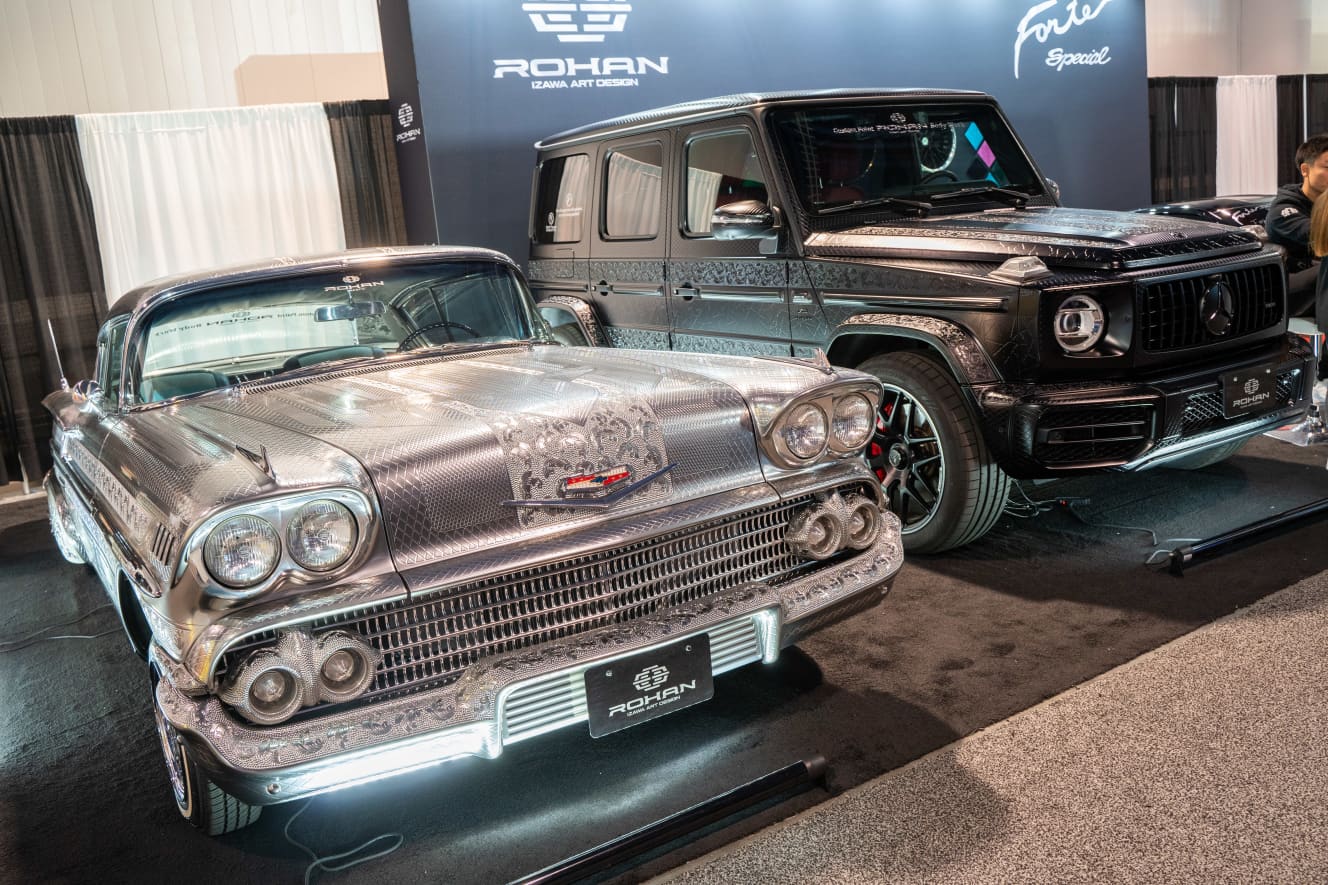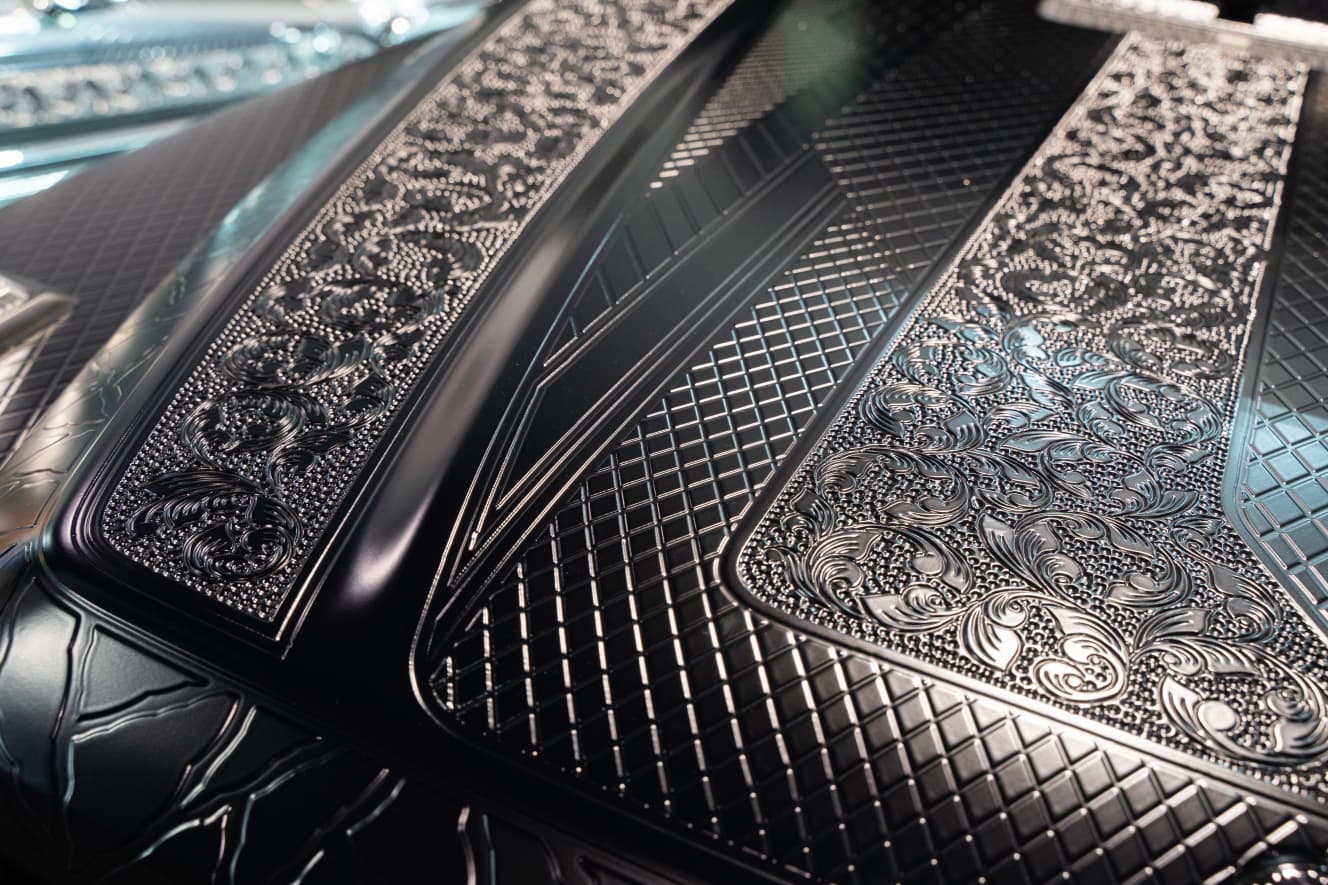Super Rare Japanese Cars Shine at SEMA Show with 2,400 Companies
The "SEMA SHOW" is a large-scale event dealing with "aftermarket products" such as modified car parts and repair supplies. Kumiko Kato, an automotive journalist who has been covering the show for 30 years since 1993, reports on the excitement of this year's show from the show site.

Although many Japanese exhibitors, who had held off due to the COVID-19 pandemic, seemed to have mostly returned, it wasn’t only new products from large companies that attracted attention. What truly amazed Americans was the craftsmanship demonstrated by Takahiko Izawa, the head of IZAWA ART DESIGN and a master custom painter. He showcased the “Metal Impala,” a 1958 Chevrolet Impala that was enhanced with his custom-developed metal paint and intricate hand-engraved details, a groundbreaking technique that left spectators in awe.
In 2020, the car was displayed at the San Diego Automotive Museum, and starting in June 2024, it will be showcased for about a year at the Petersen Automotive Museum, the largest on the West Coast of the United States. These exhibitions mark a historic achievement as the first by a Japanese artist. Long lines formed at the booth, eager to witness his extraordinary craftsmanship.
The cost of airfreight from Japan was approximately 5 million yen one-way. The display at the SEMA Show was made possible by transporting the Impala currently at the Petersen Museum to the Las Vegas venue.

The history of Japanese cars dominating the SEMA SHOW.
The author’s first visit to the SEMA SHOW was over 30 years ago in 1993. During the 1990s, there were hardly any Japanese demo cars or exhibits from Japanese companies; the event was dominated by massive pickup trucks, 4x4s, and muscle cars like Mustangs and Corvettes. The surge of Japanese demo cars began about 10 years ago, coinciding with the rising prices of 1980s and 1990s Japanese sports cars like the Skyline GT-R, which became an American dream car.
How has the popularity of Japanese cars at the SEMA SHOW evolved over time? I spoke with Katsuya Nakai, the GM of U.S. operations at global suspension manufacturer TEIN, which is celebrating its 20th year of exhibiting at the show.
“Our first exhibit in 2003 came two years after the release of the first ‘Fast & Furious’ movie, which helped ignite the popularity of Japanese tuning in the U.S. By then, ‘TEIN’ products were growing rapidly in popularity, and our booth was very crowded. Many attendees would come up and say, ‘I have TEIN!’ During this period, the Honda Civic and Integra were especially popular.
When ‘Tokyo Drift,’ the third installment in the ‘Fast & Furious’ series, was released in 2006, along with the start of ‘Formula Drift’ and other drift events, it perfectly aligned with America’s love for flashy tuning and dramatic racing. After the 2014 import ban on the Skyline R32 GT-R was lifted, older Japanese cars began flooding the SEMA SHOW, and the excitement has continued since.”
Whether it was new cars, vintage models, or the classic American custom scene, Japanese companies and craftsmanship stood out. Without a doubt, Japanese cars were at the heart of the car festival that thrilled 200,000 attendees.